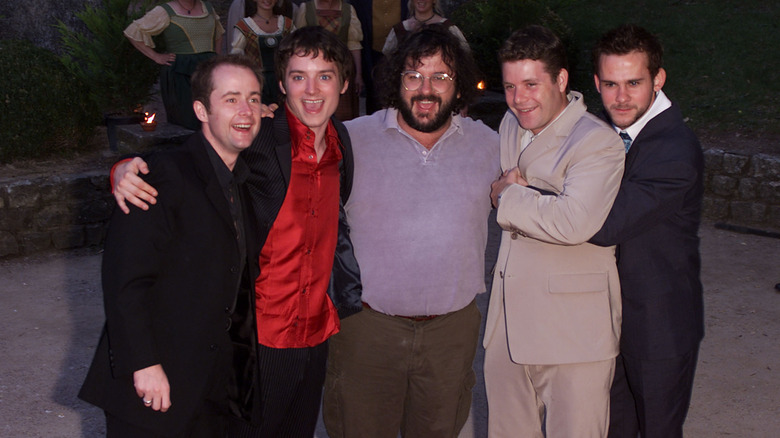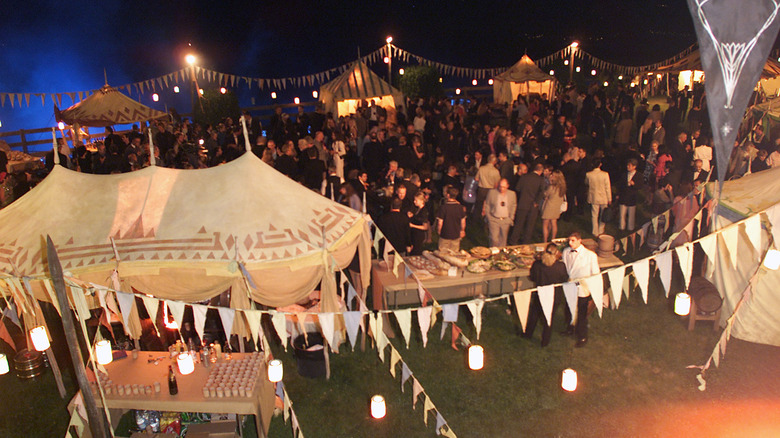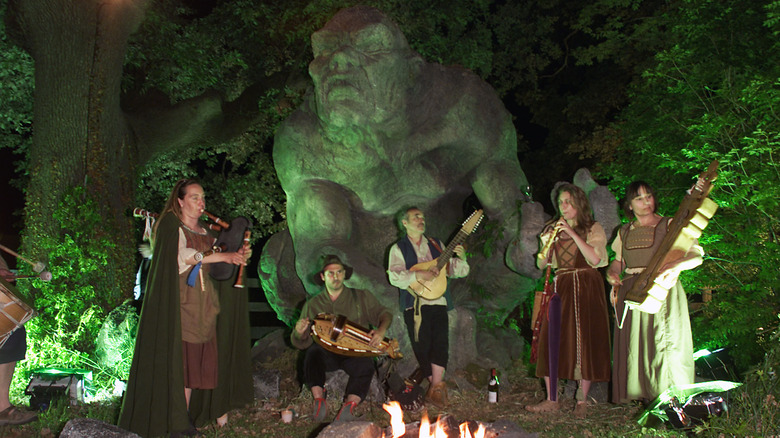How The Cannes Film Festival Set The Stage For Lord Of The Rings
Could you imagine life without the "Lord of the Rings" trilogy? Without it, the fantasy genre may not have that big of a foothold in pop culture — which means shows like "Game of Thrones" and "The Legend of Vox Machina" may not have taken off like they did. References to J.R.R. Tolkien's novels would more than likely be regulated to Stephen Colbert's talk shows, which would sadly deprive the world of raps about the "#1 trilly". The success of director Peter Jackson's "The Lord of the Rings" films was something of a miracle.
Jackson and New Line Cinema's Bob Shaye decided to take a unique approach in introducing footage from "Lord of the Rings: The Fellowship of the Ring" to the world by unveiling a lengthy showreel at a themed party during the 2001 Cannes Film Festival. Though New Line had gained a reputation for taking on risky films that turned out to be hits (especially Wes Craven's "A Nightmare on Elm Street"), "Lord of the Rings" looked to be the company's biggest risk yet, with a blockbuster budget and plans to film all three entries back to back. In short, it was the kind of gamble that could sink a studio.
A rollout fit for a king
When interviewed for the 20th anniversary of "Fellowship of the Ring" by Deadline, Jackson's agent/manager, Ken Kamins, said that New Line founder Bob Shaye was the biggest champion in Jackson's corner. Shaye wanted to blow viewers away with the "Lord of the Rings" footage — even though the movie still a long way from completion.
"It was Bob who came up with the idea of leaning into Cannes of 2001...'Let's blow people away.' But of course, once you decide you're going to spend $2 million dollars on a party and treat 26 minutes like a premiere, the stakes are total. Get it right and you are on your way to something really important and powerful. Get it wrong, and you've made the biggest miniseries in the history of TNT."
Leaning into the sense of bombast, the film's set designers transformed the Château de Castellaras into an exact replica of Middle-earth — specifically, the Shire where the Hobbits resided. That sense of immersion, combined with the footage Jackson presented to the audience, helped win viewers over and built terrific word of mouth for the movie at a critical point in the process.
No risk, no reward
The "Lord of the Rings" films eventually racked up critical acclaim, a foothold in pop culture, and more than a few awards. The third film, "The Return of the King," wound up sweeping the 76th Academy Awards and winning every award it was nominated for. The same level of craft that Jackson, his cast, and his crew put into the Cannes presentation is on full display in all three films, from the armor characters wear to the intense battle sequences and the lavish sets. Cannes gave audiences a small taste of what Jackson had in store for Middle-earth, and they were more than willing to line up for the full buffet. "That footage was going to make or break us," Jackson says in the book "Anything You Can Imagine: Peter Jackson and the Making of Middle-earth." "But it made us."
Audiences will return to Middle-earth later this year with Amazon Prime Video's "The Lord of the Rings: The Rings of Power", which explores the Second Age of Middle-earth. Hopefully, Prime Video takes the history of the "Lord of the Rings" films into consideration and gives a presentation that wins over audiences.


